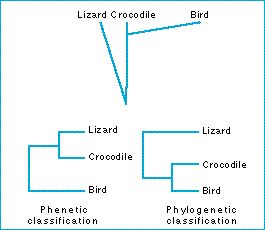Classification and evolution - What are the two principles used to classify species?

How do the two principles differ?
In most real cases in biology, the phylogenetic and phenetic principles give the same classificatory groupings. If we consider how to classify a butterfly, a beetle, and a rhinoceros, the butterfly and beetle are more closely related both phenetically and phylogenetically. The beetle and butterfly both look phenetically more alike, and share a more recent common ancestor with each other than either does with the rhinoceros. In other cases the principles can disagree.
They can disagree for two main reasons:
1. Evolutionary convergence. Adult barnacles superficially look rather like limpets and if we were to classify an adult barnacle, limpet, and lobster phenetically we might well put the barnacle and limpet together even though the lobster and barnacle share a more recent common ancestor and are grouped together phylogenetically.
2. Different rates of evolution. The phenetic and phylogenetic classifications of the reptilian groups differ because some descendants (such as birds) of the common ancestor of the group have evolved rapidly and left a rump of quite distantly related groups that resemble one another phenetically.
The biologist Richard Dawkins explains the difference between the two principles.
Figure: the phenetic (a) and phylogenetic (b) principles of classification may differ.
| Next |



